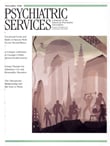A model for evaluating intensive outpatient behavioral health care programs
Abstract
OBJECTIVE: This study proposes a model with five criteria for evaluating the effectiveness of intensive outpatient behavioral health care programs and applies this model to a brief partial hospital-crisis stabilization program. The five criteria are client selection, program attendance, service utilization and focus of treatment, client improvement, and cost-effectiveness. METHODS: The program evaluation model was tested with a sample of 285 adults with severe mental illness who were admitted for or were receiving outpatient treatment at a state- funded community mental health center. Evaluation data included pre- and postprogram ratings by clinical staff of clients' symptoms, level of functioning, and treatment readiness; current and retrospective reports of clients' symptoms based on interviews with clients; and clients' service and financial records. Clients and clinicians also provided data about the problems addressed during treatment sessions. RESULTS: Program dropouts used significant facility resources before dropping out. Clients who participated in the partial hospital-crisis stabilization program showed reduced symptoms, improved daily functioning, and improved treatment readiness. Clients who showed more improvement cost less to treat. CONCLUSIONS: The evaluation model produced the information necessary for demonstrating program effectiveness. The results support the belief that clinical effectiveness and cost-effectiveness are positively related.
Access content
To read the fulltext, please use one of the options below to sign in or purchase access.- Personal login
- Institutional Login
- Sign in via OpenAthens
- Register for access
-
Please login/register if you wish to pair your device and check access availability.
Not a subscriber?
PsychiatryOnline subscription options offer access to the DSM-5 library, books, journals, CME, and patient resources. This all-in-one virtual library provides psychiatrists and mental health professionals with key resources for diagnosis, treatment, research, and professional development.
Need more help? PsychiatryOnline Customer Service may be reached by emailing [email protected] or by calling 800-368-5777 (in the U.S.) or 703-907-7322 (outside the U.S.).



